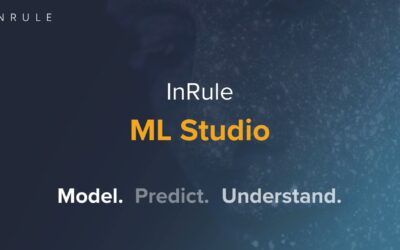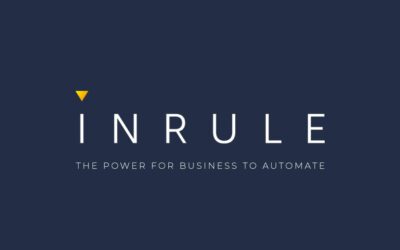About Hollard
Founded in 1980, Hollard Insurance Group is South Africa’s largest privately owned insurance group. The group includes The Hollard Insurance Company and Hollard Life Assurance Company.
The company provides short-term insurance, life insurance, and investment products to a diverse customer base, including individual consumers, commercial entities, and corporate clients.
Hollard aims to enable more people to create and secure a better future.
Background
Hollard Life Assurance Company distributes and administers funeral and underwritten long-term insurance products. Since the insurance industry is heavily regulated, Hollard has multiple rules to abide by to stay compliant. Before implementing InRule, most of these rules relied on individuals’ expertise, meaning they mostly lived in peoples’ heads or scattered in documents that did not directly speak to systems. Further, in a competitive industry, Hollard needed to respond to change quickly, placing even further pressure on individual experts. Employee retention and subjectivity, therefore, became a challenge for Hollard.
Hollard also lacked a system that could centralize all the rules, leading to uncertainties and fragmented rule applications. Multiple mergers had contributed to Hollard having those fragmented rule applications. Even though the products Hollard offers may be very similar or even identical, the rules pertaining to them may differ.
The vision – centralizing the rules
Because of these challenges, Hollard envisioned centralizing all the rules in one place and leveraging them in its processes via APIs. Simultaneously, Hollard identified ownership of business rules as a risk since they weren’t being managed in a structured way.
Meanwhile, Hollard was using several policy administration systems, with only one of them developed in-house. The rest of the systems were vendor applications that didn’t quite cater to Hollard’s unique needs.
These were some of the challenges that prompted Hollard to start researching a decision automation solution.
Converting complex rules to development
Before implementing InRule, Hollard relied on developers to support the business with the appropriate tools. The challenge was that developers often lacked expertise in the actual ways that the specific processes and products worked.
“Before InRule, developers had to interpret complex insurance rules and code them into Applications. That created several back-and-forth processes to end up where we needed to be. We’re much faster and more accurate when completing a project with InRule at our disposal.”
Simba Chinyani – Business Rules Architect
This was made evident in a recent project they conducted:
“We were rewriting the rules for one of our underwriting books. Rather than having developers focus on developing something outside of their expertise, we had the business experts implement the rule logic, and developers work on Applications and APIs. The overall perception was that it was one of the best projects we’ve carried out.”
Simba Chinyani – Business Rules Architect
Hollard realized that the closer you get to the source of knowledge, the more complexity will tend to decline.
Why InRule?
Whilst going through the procurement process, Hollard designed an extensive questionnaire with technical and architectural assessments. One of the critical bullet points was that the system had to be cloud-enabled, secure, easy to use, and to integrate.
Implementing a new system can be tricky in several ways. One of them is getting everyone comfortable with new ways of working; thus, one of the reasons why Hollard was keen on ease of use. The Hollard team got to experience the platform firsthand by seeing a demonstration, doing their own trial, and finally working with InRule on a PoC before they made the final decision.
“It’s difficult to single out one or two factors that made us choose InRule. InRule corresponded to our needs in terms of functionality. And the ease of use was the cherry on the cake, so it made perfect sense for us.”
Ridwan Vadwalla – Head: Architecture
Getting started with InRule
When implementing InRule, Hollard started with the low-hanging fruit to hit the ground running and decrease the time until the value was seen. That led Hollard to begin by transforming the insurance policy application processes.
“We chose to start with an easy project to ensure that the tool and processes were working properly before tackling more complex and high-risk projects, which could have a greater impact on the business if something went wrong.”
Simba Chinyani – Business Rules Architect
Application workflows might sound like a rudimentary process, but automating this area has saved Hollard an abundance of time. As Hollard manages high volumes of applications, the application process had been a time-consuming business for a long time.
From there on, Hollard started to move quickly and implement more and more models, moving to more complex areas such as underwriting, which added complex rules and several factors that needed to be considered.
“At first, we didn’t consider InRule for underwriting because the team was used to a certain way of working and wasn’t sure of InRule’s capabilities. But once we built it in InRule, we could not imagine doing it the old way.”
Simba Chinyani – Business Rules Architect
Processes powered by InRule
Since implementing the first application, Hollard has taken significant strides to implement InRule in more areas of the Insurance Life Cycle, ie
- Sales and Distribution
- Claims Management
- Underwriting and Risk Management
- Collections etc.
Results and value
By empowering the business with the right tools, Hollard has become more agile and efficient.
Reducing manual work is not only a time-saver for Hollard, but it also enforces quality and compliance, providing Hollard with peace of mind that all rules, decisions, and processes are working correctly.
Hollard has also been able to reduce turnaround times drastically. Whereas they’d previously needed several days or weeks to fix an issue, with its new decision logic, they can now do this in the blink of an eye.
“When someone asks me how many days I need to fix an issue, I can often now comfortably say one hour, which was unheard of previously.”
Simba Chinyani – Business Rules Architect
The following summarises some of the benefits Hollard has received since implementing InRule:
- Speed to market with quick implementation
- Reducing manual work by automating processes.
- Time-savings for developers to work on Software development instead of complex insurance rules and calculations.
- Reduced turnaround times for adjusting rules – from days to hours.
- Compartmentalized changes without the fear of breaking something.
- Bridging the gap between IT and the business
- Cost-savings from eliminating manual work and closing redundant systems.
- Easy debugging and quick-to-fix issues.
- Easy to test logic within the development studio or via Postman before committing changes.
- InRule validates logic within the development environment, ensuring faulty syntax or circular logic never gets to production.
What’s next for Hollard?
Hollard has yet to experience all the features within the InRule AI Decisioning Platform but is keen on exploring how it could help continue to propel its business. To achieve that, Hollard plans to continue expanding the use of InRule across the organization and connect more divisions within its business to InRule.
We look forward to following Hollard on its automation journey and finding new and better ways of working!


